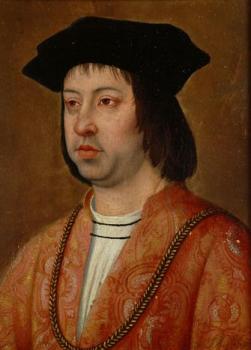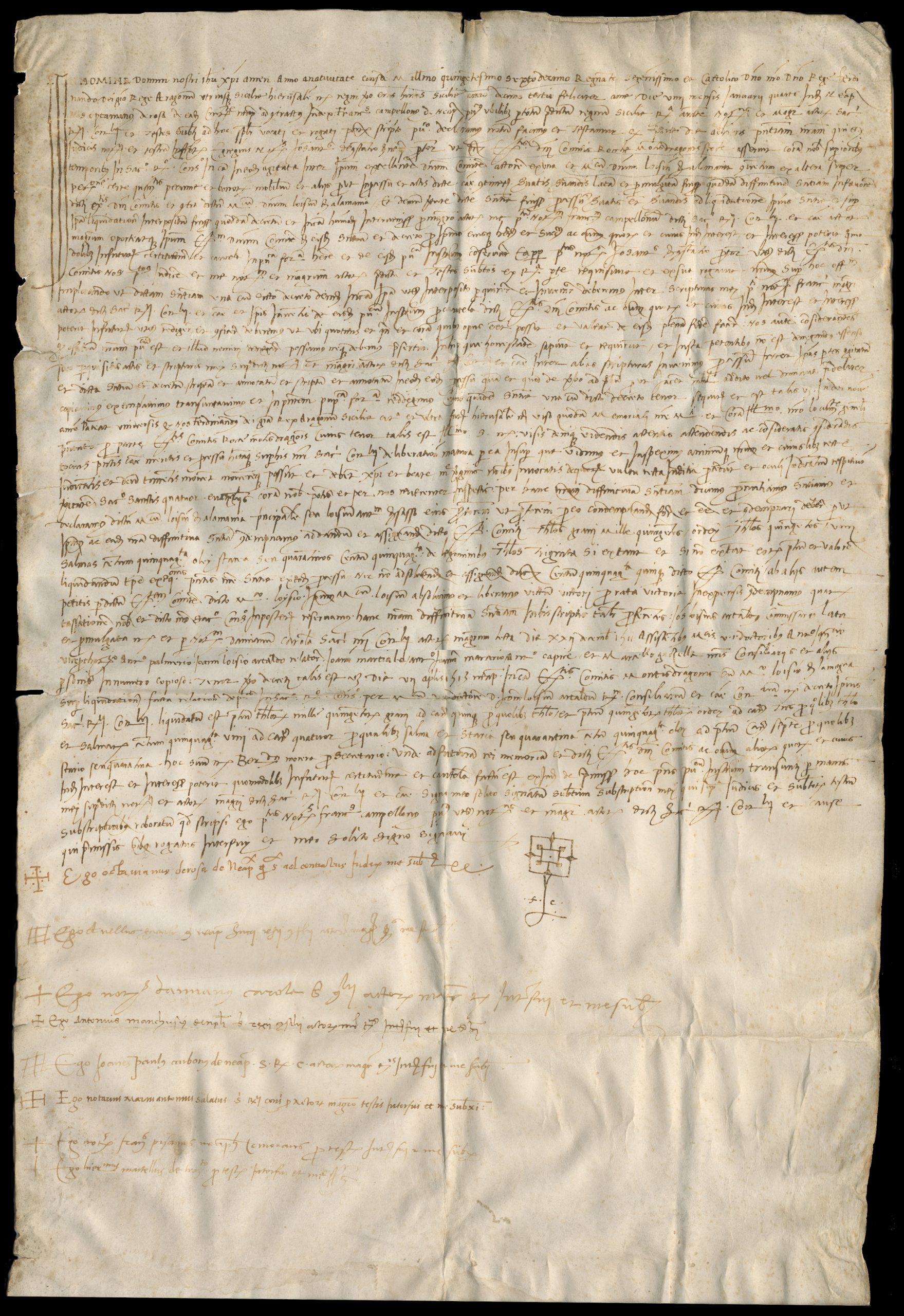Ferdinand II
Ferdinand II
Parchment in Latin - c1500
A large, spectacular vellum parchment document, circa 1500 from the reign of Spain’s Ferdinand II, King of Sicily and Aragon, 16″ x 25″, in Latin, untranslated, with nine court signature devices.
Ferdinand the Catholic (Ferdinand II of Aragon) (Spanish: Fernando II de Aragón y V de Castilla “el Católico”, Catalan: Ferran II d’Aragó “el Catòlic”, Aragonese: Ferrando II d’Aragón “lo Catolico”; 1452-1516) was King of Aragon (1479-1516), Sicily (1468-1516), Naples (1504-1516), Valencia, Sardinia, and Navarre, Count of Barcelona, de jure uxoris King of Castile (1474-1504) and then Regent (and true ruler) of that country also from 1508 to his death, in the name of his mentally unstable daughter Joanna the Mad.
He married Infanta Isabella, the half-sister and heiress of Henry IV of Castile, on 19 October 1469 in Valladolid and became jure uxoris King of Castile when Isabella succeeded her brother as Queen of Castile in 1474. Isabel also belonged to the royal House of Trastámara. Married under the joint motto, tanto monta, monta tanto, the two young monarchs were initially obliged to fight a civil war against Joan, princess of Castile (also known as Juana la Beltraneja), the purported daughter of Henry IV, and were swiftly successful. When Ferdinand succeeded his father as King of Aragon in 1479, the Crown of Castile and the various territories of the Crown of Aragon were united in a personal union creating for the first time since the 8th century a single political unit referred to as España (Spain), the root of which is the ancient name Hispania, although the various states were not formerly administered as a single unit until the 18th century, but rather, as separate political units under the same Crown.
The first decade of Ferdinand and Isabella’s joint rule were taken up with the conquest of the Kingdom of Granada, the last Arab-Muslim state in the Iberian peninsula, which was completed by 1492. In that same year, the Alhambra Decree was issued, expelling all Jews from both Castile and Aragon, and Christopher Columbus was sent by the couple on his expedition (ostensibly bound for east Asia) which resulted in the European arrival in the America.


